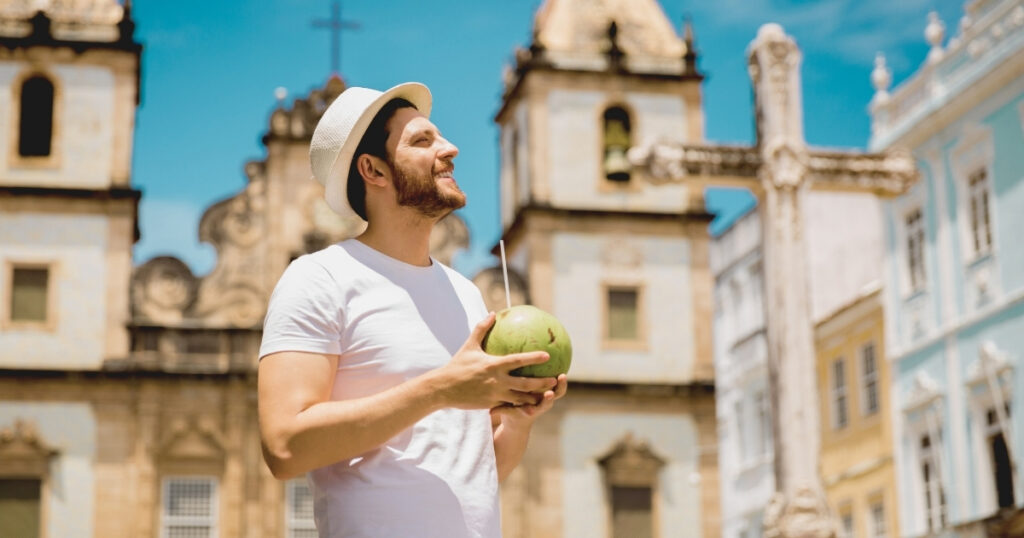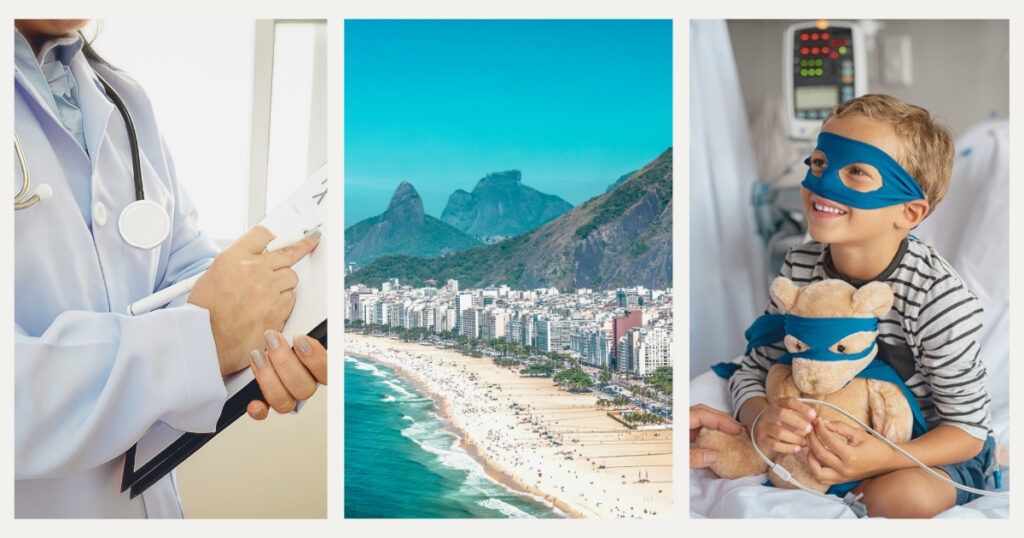Navigating health insurance in Brazil presents unique challenges for digital nomads seeking both comprehensive coverage and peace of mind. Understanding the Brazilian healthcare system’s dual nature—public and private—is essential for those embracing location independence in this diverse South American country.
Brazil’s healthcare landscape offers varying levels of access and quality that directly impact your nomadic lifestyle and productivity. From public Sistema Único de Saúde (SUS) to private insurance plans, knowing your options ensures you’re protected while exploring from the Amazon rainforest to the beaches of Rio.
As you plan your Brazilian adventure, we’re here to help you understand the complex world of health insurance in Brazil so you can focus on what matters most—embracing your freedom while staying protected with appropriate health insurance in Brazil.
Understanding Brazil’s healthcare system

Brazil operates a two-tiered healthcare system that combines universal public coverage with an extensive private sector. When considering health insurance in Brazil, digital nomads must understand how these systems interact and what coverage best suits their unique needs. The Brazilian healthcare landscape has evolved significantly in recent decades, creating a complex environment that offers both opportunities and challenges for international remote workers.
The public healthcare system (SUS)
Brazil’s Sistema Único de Saúde (SUS) provides universal healthcare access to everyone in Brazil—including travelers and digital nomads—regardless of nationality or immigration status. Established in 1988, this public system covers everything from basic preventive care to complex surgeries at no direct cost to patients.
The SUS framework includes emergency care, primary care through community health centers, specialized services, and pharmaceutical assistance. For digital nomads, understanding that emergency services are the most accessible aspect of SUS is crucial—you can receive emergency treatment at any public hospital by showing your passport.
Despite its comprehensive coverage, SUS faces challenges including long wait times, overcrowded facilities, and resource limitations, particularly in remote areas. The quality of care varies significantly between major cities and rural regions, making it a less reliable option for digital nomads who need prompt, consistent care.
🌟 Pro tip: while SUS provides emergency care to everyone, register for a CPF (Brazilian tax ID) to access non-emergency public healthcare services more easily during longer stays in Brazil.
The private healthcare sector
Brazil’s private healthcare sector offers significantly faster access to medical services, shorter wait times, and more comfortable facilities than the public system. Many Brazilians who can afford it opt for private insurance, creating a robust market with numerous plan options.
Private hospitals and clinics in Brazil often feature multilingual staff, modern equipment, and standards comparable to those in North America and Europe, particularly in major cities like São Paulo, Rio de Janeiro, and Belo Horizonte. Premium facilities such as Hospital Israelita Albert Einstein in São Paulo are internationally accredited and rival the best medical institutions globally.
The private sector operates through two main channels: direct payment or health insurance plans (planos de saúde). For digital nomads, this accessibility and quality come with premium costs, but many consider it essential for maintaining productivity and peace of mind.
💡 Did you know? Brazil ranks among the top countries globally for cosmetic surgery and has world-class specialists in several medical fields, making it a destination for medical tourism alongside digital nomadism.
Health insurance options in Brazil

Health insurance in Brazil offers several pathways to coverage, each with distinct advantages based on your stay duration, budget, and healthcare needs. Understanding these options helps you make informed decisions about your health protection strategy.
International health insurance
For digital nomads planning extended stays in Brazil, comprehensive international health insurance provides the most robust coverage. These plans typically cover you across multiple countries, including Brazil, offering continuity of care as you travel. Major providers like Cigna Global, Allianz, and GeoBlue offer plans designed for expatriates and digital professionals.
International policies generally include hospitalization, outpatient services, emergency care, and sometimes medical evacuation. Premium plans may also cover preventive care, specialist consultations, and prescription medications. Coverage limits typically range from $500,000 to several million dollars annually.
The primary advantage of international insurance is its portability—your coverage remains consistent as you move between countries. While more expensive than local options (typically $100-300 per month for healthy individuals under 40), these plans offer the flexibility nomads need when moving between countries.
Brazilian private health plans
Brazilian private health insurance plans (planos de saúde) provide excellent coverage specifically within the country at typically lower costs than international options. These plans grant access to networks of private hospitals, clinics, and specialists throughout Brazil. Major Brazilian insurers include Amil, Bradesco Saúde, and SulAmérica.
Brazilian plans operate under regulation by the National Supplementary Health Agency (ANS), which establishes minimum coverage requirements. Plans are categorized by coverage type—ambulatorial (outpatient only), hospitalar (hospital only), or both combined—and by accommodation level.
Most Brazilian plans require you to have a CPF (tax ID) and proof of address, making them more suitable for nomads planning stays of six months or longer. Plans vary widely in coverage scope and network size, with regional plans being more affordable than nationwide coverage. Monthly premiums typically range from R$300-800 ($55-150 USD) for basic coverage—significantly less expensive than equivalent international insurance for health coverage in Brazil.
🌟 Pro tip: if committing to a Brazilian private plan, choose one with a flexible cancellation policy to accommodate your nomadic lifestyle, as many standard plans have 12-month minimum commitments.
Travel insurance with medical coverage

For shorter stays in Brazil, travel insurance with robust medical coverage offers a balanced solution that protects against both health emergencies and travel disruptions. These plans typically cover emergency medical care, hospital stays, and sometimes medical evacuation. Popular providers for nomads include SafetyWing, World Nomads, and Allianz Travel.
Travel insurance plans generally cover unexpected illnesses and injuries rather than preventive care or pre-existing conditions. Coverage limits range widely, from $50,000 to $1 million for medical expenses, with premiums typically between $40-150 per month. Many plans also include valuable non-medical benefits like trip cancellation and lost baggage compensation.
When selecting travel insurance for Brazil, pay attention to coverage for adventure activities if you plan to explore the country’s natural wonders. Many basic plans exclude “high-risk” activities that may require premium coverage or specific add-ons.
Digital connectivity is essential when managing health emergencies abroad. A reliable eSIM from Holafly ensures you maintain internet access to contact your insurance provider, access digital health records, or consult with virtual doctors—critical capabilities when navigating health insurance in Brazil and healthcare services in an emergency situation.
Practical considerations for health insurance in Brazil

When selecting health insurance in Brazil, digital nomads must consider several practical factors that impact overall coverage value and accessibility. These considerations help ensure your chosen plan aligns with your specific needs while working remotely in Brazil.
Coverage networks and geographical limitations
Health insurance networks in Brazil vary significantly by location, with the best coverage concentrated in major urban centers. Before selecting a plan, carefully evaluate its geographical scope and network strength in your intended destinations.
Brazil’s vast territory means healthcare quality differs dramatically between regions. São Paulo and Rio de Janeiro offer world-class medical facilities, while the Amazon region has more limited options. Your plan should reflect your travel itinerary across Brazil, with stronger coverage in areas where you’ll spend most of your time.
Key factors to consider when evaluating insurance networks in Brazil:
- Hospital and clinic density in your target regions
- Availability of English-speaking medical professionals
- Coverage for specialized care you might need
- Telemedicine options for remote areas
- Emergency transportation coverage
- Repatriation insurance for serious conditions
- Deductible and co-payment requirements
🌟 Pro tip: create a map of your insurance provider’s in-network facilities in each Brazilian city you plan to visit, saving it offline for quick access during emergencies.
Understanding coverage limitations and exclusions
Brazilian health insurance policies often contain specific limitations that digital nomads should carefully review. Pre-existing conditions, certain treatments, and waiting periods can significantly impact your coverage effectiveness.
Most Brazilian private plans implement carências (waiting periods) before covering certain procedures, typically ranging from 24 hours for emergencies to 300 days for childbirth. These waiting periods are legally established by ANS regulations and generally include:
- 24 hours for emergencies and accidents
- 30 days for basic consultations and simple exams
- 180 days for surgeries and hospital admissions
- 300 days for childbirth and pregnancy-related care
Brazilian plans also categorize pre-existing conditions differently than international insurers. Conditions must be declared during enrollment, and coverage for related treatments usually begins after 24 months.
International nomads should also verify coverage for tropical diseases prevalent in certain Brazilian regions, as some plans exclude these as “preventable conditions.” Diseases like dengue fever, zika, and leishmaniasis may require specific riders or premium plans for full coverage.
Final thoughts on health insurance in Brazil
Securing appropriate health insurance in Brazil represents a crucial step in your digital nomad journey through this diverse and vibrant country. The Brazilian healthcare landscape offers quality care options, but navigating between public and private systems requires informed decision-making about health insurance in Brazil.
For most digital nomads, a layered approach to health insurance in Brazil often works best—combining travel insurance for emergency coverage with either international health insurance or a Brazilian private plan depending on your length of stay. This strategy provides comprehensive protection while maximizing cost efficiency.
Digital nomads should balance cost considerations against coverage quality, particularly focusing on access to private facilities in their specific destinations. Remember that while the public system provides a safety net, private insurance delivers the reliability and comfort most remote workers prioritize.
As you prepare for your Brazilian adventure, invest time in understanding health insurance options as thoroughly as you would research coworking spaces or accommodation. Your health security enables the freedom and confidence that make the digital nomad lifestyle truly rewarding.
For more insights on maintaining your health while embracing the nomadic lifestyle, explore our comprehensive guide to wellness for digital nomads with practical tips for staying healthy while working remotely around the world.
Your Brazilian journey awaits with the perfect balance of adventure and security through Nomada 👉
Frequently asked questions about health insurance in Brazil
Brazil’s public healthcare system (SUS) is available to everyone regardless of nationality or residence status. However, expect longer wait times and variable quality, making it best suited for emergencies rather than ongoing care.
Most Brazilian private plans require a CPF (tax ID number), proof of address in Brazil, and sometimes a visa showing you’ll be in the country long enough to justify the plan. Some insurers may waive certain requirements for specialized expatriate plans.
Coverage for medications varies by plan. Most private plans offer partial reimbursement for prescriptions, while some premium plans include pharmacy discount programs. Over-the-counter medications are rarely covered but are generally affordable in Brazil.
Most private hospitals in major Brazilian cities have English-speaking staff. Your insurance provider should offer a directory of multilingual providers, and international clinics in São Paulo and Rio de Janeiro typically cater to expatriates and digital nomads.




